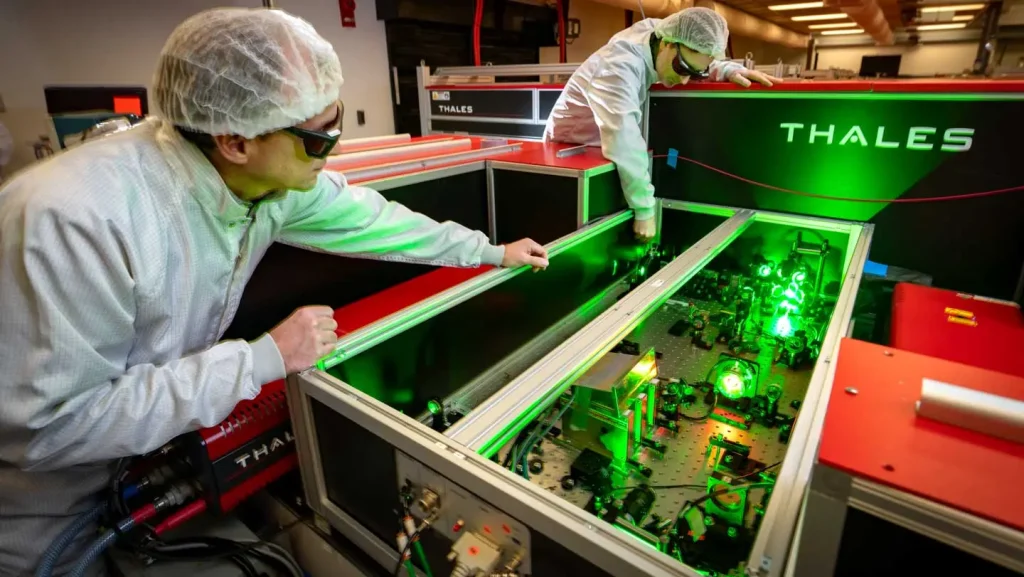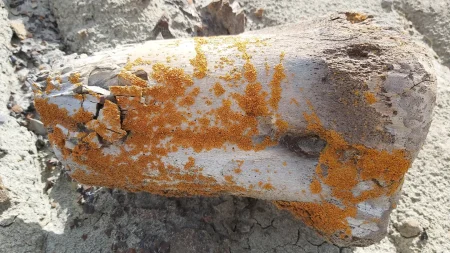Muons on the Move: Exploring the Future of Portable Screening Technology
The scientific community is buzzing with excitement over recent developments in muon technology that could revolutionize security screening and structural inspection. Muons—subatomic particles similar to electrons but about 200 times heavier—have long been valued for their unique ability to penetrate dense materials that block other forms of radiation. Until now, these particles have primarily been observed in cosmic rays or generated in massive particle accelerators, limiting their practical applications. However, recent advances suggest we may be on the cusp of developing portable muon-generating devices, opening up remarkable new possibilities for security screening, archaeological research, and industrial inspection.
These breakthroughs could transform how we detect hidden contraband in shipping containers, trucks, and other large cargo vessels. Current screening technologies like X-rays can be blocked by dense materials, creating blind spots that smugglers exploit. Muons, with their superior penetrating power, can pass through thick layers of metal, concrete, or lead while still detecting density variations that might indicate hidden drugs, weapons, or nuclear materials. The ability to generate muons on-demand in a portable format would eliminate the need for expensive fixed screening facilities, allowing security personnel to conduct thorough inspections anywhere and anytime—potentially closing critical security gaps at borders and ports worldwide.
Beyond security applications, portable muon technology could revolutionize fields like archaeology and structural engineering. Archaeologists have already used cosmic muons to peer inside ancient pyramids and discover hidden chambers without destructive excavation. Engineers have employed similar techniques to inspect the internal condition of nuclear reactors, dams, and bridges. However, these efforts currently rely on passive detection of naturally occurring cosmic muons, which requires lengthy exposure times—often weeks or months—to collect enough data. A compact muon source would dramatically accelerate this process, potentially reducing inspection times from months to hours while providing clearer, more detailed images of internal structures.
The technical challenges remaining are substantial but not insurmountable. Traditional muon production requires particle accelerators the size of several football fields—clearly impractical for field use. The new research suggests methods to generate muons through alternative nuclear reactions that could potentially be miniaturized. Scientists are exploring novel approaches involving compact particle accelerators and innovative target materials that could produce useful muon beams in devices no larger than a small truck or, eventually, a suitcase. Power requirements, radiation shielding, and detector technology also present hurdles, but rapid advances in materials science and computing power are making solutions increasingly feasible.
Ethical and regulatory considerations will need to keep pace with these technological developments. The ability to see through walls and solid objects raises obvious privacy concerns that will require thoughtful policy frameworks. Radiation safety standards for operators and bystanders will need updating to account for this new technology. Additionally, international coordination will be essential to prevent misuse while ensuring legitimate security and scientific applications can flourish. Despite these challenges, the potential benefits—from preventing smuggling and terrorism to enabling new scientific discoveries—provide compelling motivation to develop appropriate safeguards rather than abandon the technology.
As research continues, we can expect to see initial applications in high-priority security settings and critical infrastructure inspection within the next decade. These first-generation devices will likely be vehicle-mounted systems for use at borders and ports, gradually becoming more compact and versatile as the technology matures. While truly handheld muon generators may still be decades away, each incremental improvement will expand the practical applications of this powerful inspection tool. What once seemed like science fiction—the ability to safely and non-destructively peer through solid objects with portable devices—is steadily moving toward reality, promising to transform how we secure our borders, preserve our heritage, and maintain our critical infrastructure in the coming decades.















